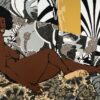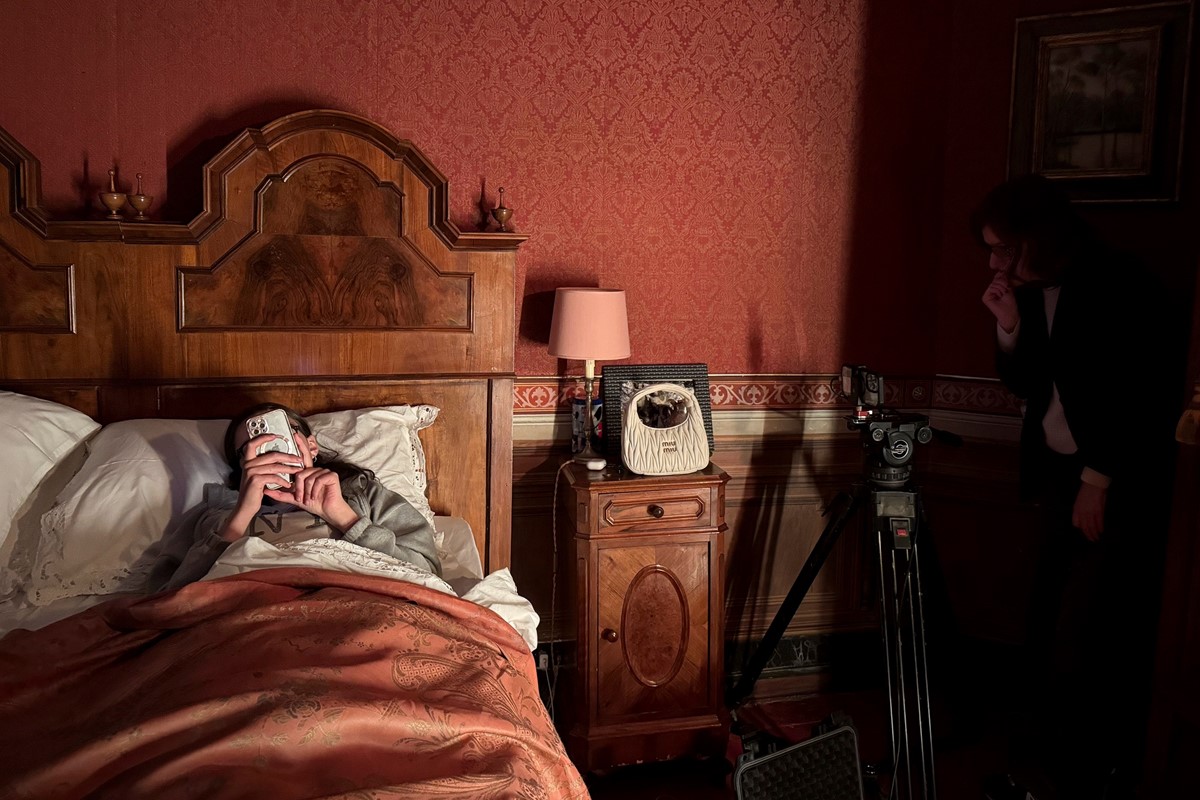
Rewrite
Lead ImageAutobiografia di una Borsetta Photography by Brigitte Lacombe
Joanna Hogg’s latest film centres on a handbag. Autobiografia di una Borsetta – Italian for ‘Autobiography of a Handbag’ – opens with a beaten-up Miu Miu Wander bag perched on a rock in a stormy Tuscan valley, recounting its life story rather wearily. “With the shaky memory I now have,” it says, “I find myself looking back on the life I led and witnessed.” Shot almost entirely from the bag’s POV, the film sees the bag ‘birthed’ at a Prada factory and later unwrapped by a teenage girl on her birthday, who is to be the first of its many owers. After it is stolen by the girl’s boyfriend, the bag’s fate takes a turn for the worse; after being hijacked by a gang of women, it witnesses a murder (speaking from the police station, it gravely professes its guilt at having been an accessory to a crime – it carried the gun). By the end of the film, after a brief moment of reprieve, the bag is abandoned and left to rot in a dreary field, all alone.
Despite its subject matter, Autobiografia di una Borsetta is about much more than just a handbag. In its 23-minute run time, Hogg manages to articulate subversive ideas about consumerism, consciousness and selfhood that linger long after the credits have rolled. The film is part of Miu Miu Women’s Tales, an arts initiative launched by Miuccia Prada in 2011, where the brand commissions women directors to create short films (previous directors have included Miranda July, Agnès Varda, Lynne Ramsay, and Ava DuVernay). Although the series claims to “investigate vanity and femininity in the 21st century”, there is no set creative brief, except that the directors must use clothing from Miu Miu’s most recent collection. These short films are also emphatically not adverts for Miu Miu, although they are a genius bit of Trojan horse marketing for the brand – what better way to add cultural value and depth to their products than to associate with the most acclaimed women film directors of the 21st century?
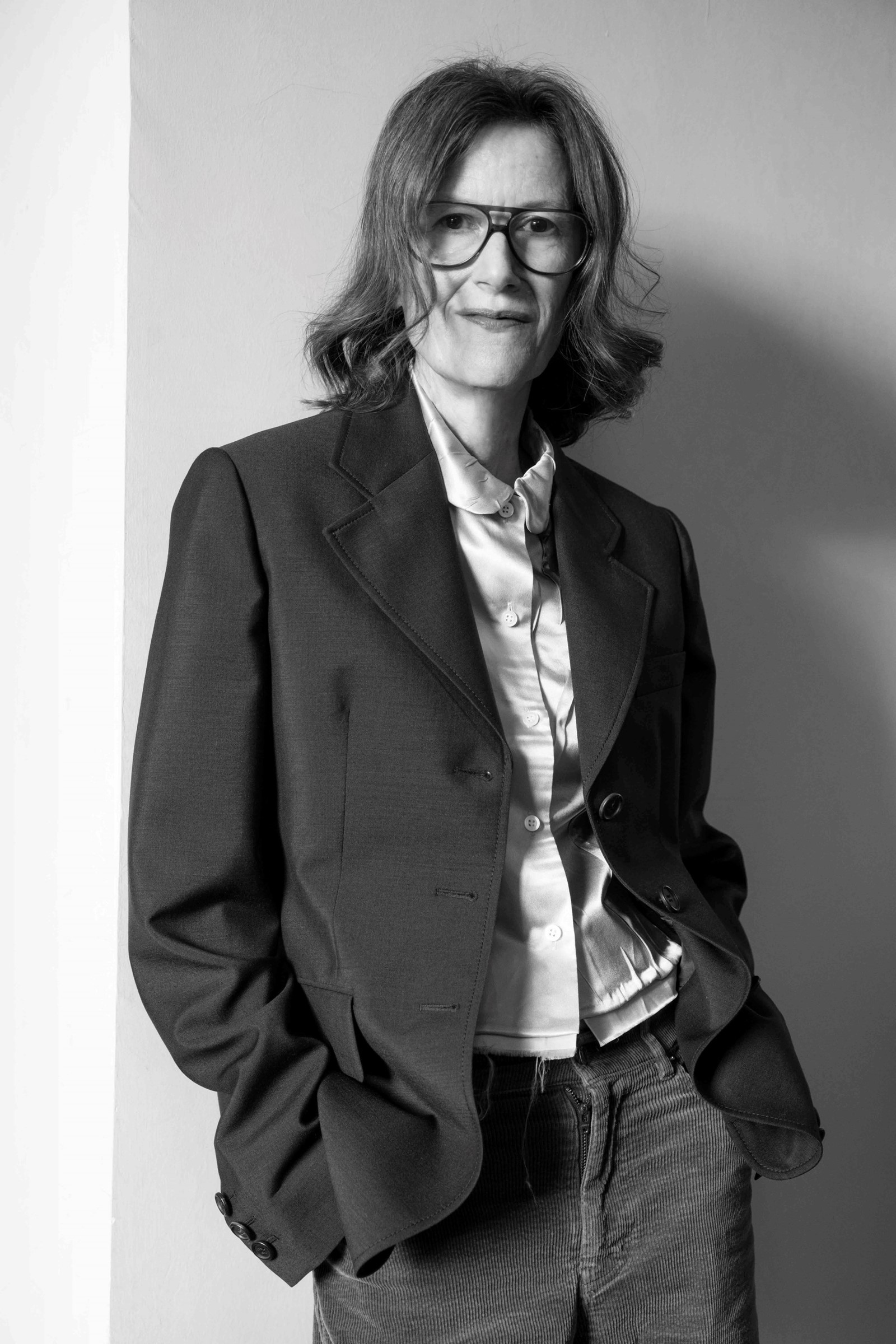
From a dimly lit hotel bar in Mayfair, wearing her signature tortoiseshell aviator glasses and a Loro Piana scarf, Hogg is speaking about her own relationship to the brand. “Before Miu Miu existed, I was enjoying what Prada was doing,” says Hogg, who bought her first nylon bag in the 1980s, and, like Miuccia Prada, adheres to the idea of wearing a personal ‘uniform’. “Then I became really interested in what Mrs Prada was doing in the art world,” she says, in reference to Fondazione Prada, an acclaimed, Prada-backed contemporary art gallery with locations in Milan and Venice.
This is not Hogg’s first foray into fashion; her 1986 graduate film, Caprice, was a dark, surreal feature about what happens when one woman (a young Tilda Swinton) falls into the pages of her favourite fashion magazine. Clothes also play a key role in Hogg’s deeply personal diptych of films, The Souvenir (2019) and The Souvenir Part II (2021), which recreated the director’s own coming of age as a film student in 1980s London; the film’s main character Julie (played by Honor Swinton Byrne) wore many of Hogg’s own clothes – or recreations of them – by brands including Yohji Yamamoto, Vivienne Westwood and Issey Miyake. Last year, Hogg also wrote the foreword to How Directors Dress, a book published by the independent American film studio A24 (who distribute her films). “How you dress is at the heart of not just who you are at work, but who you are in life,” she wrote. “Yet I’m still searching for what I want to wear to work. And that means I’m still searching for who I am.”
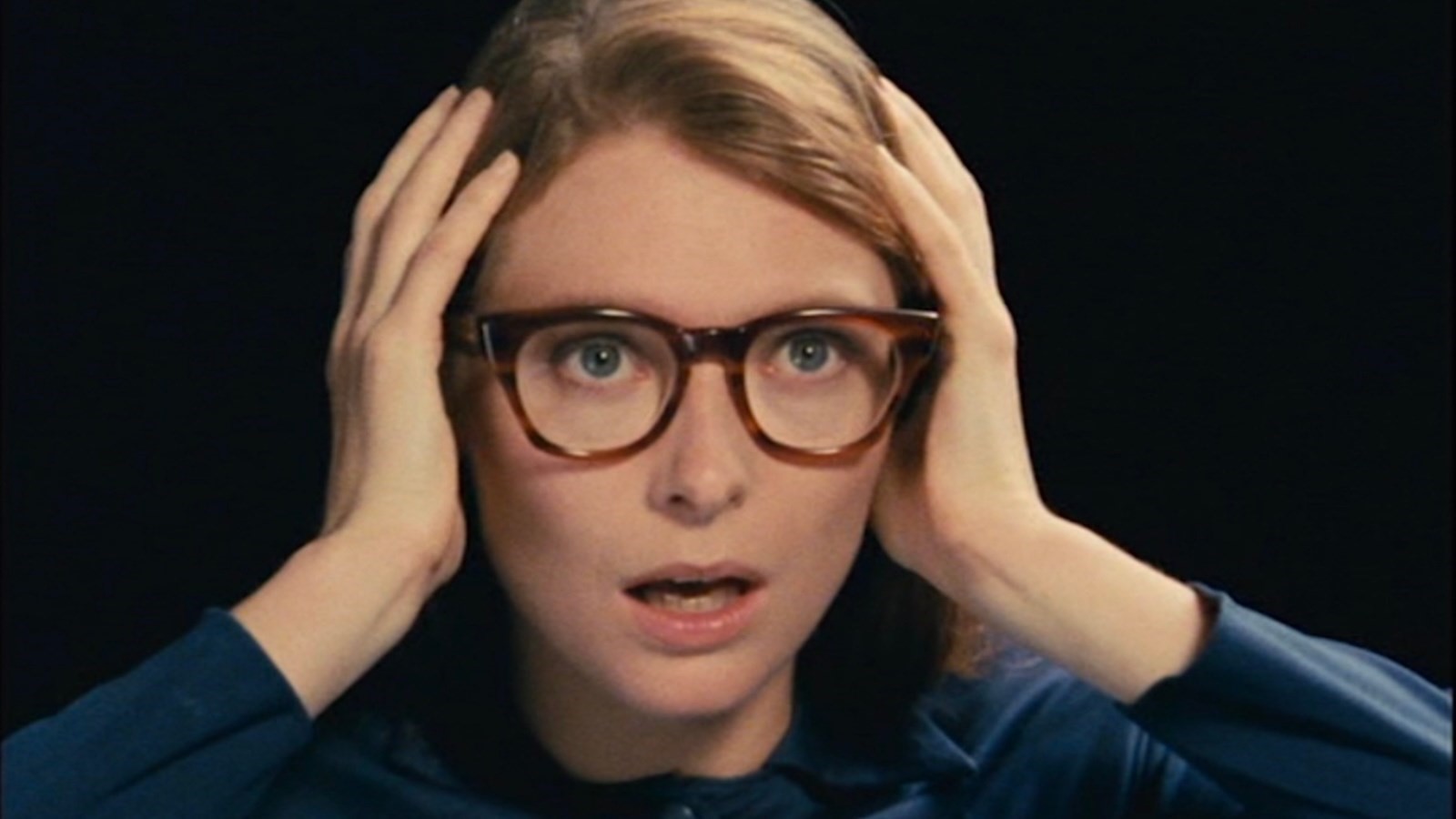
“At the time that I made Caprice, I was absolutely passionate about fashion, but I also saw a darker side to it,” says Hogg today. “Particularly as a woman, there’s this other side, which is about a lack of confidence or concern about how I might appear, but a deep love of clothes too. With Caprice, I was wanting to express all these different ideas. In a way, those ideas are still alive in me.” Summing up those existential, flummoxing feelings about fashion is the handbag in Hogg’s Miu Miu film, in one unforgettable line: “As I grew up in this house, I realised I was of great value, but sensed at the same time I was worth nothing at all.”
“Clothes are obviously incredibly important, with The Souvenirs in particular,” Hogg continues. “Those films were all about remembering and bringing to life some of those memories again, and the way of doing that was through what the characters wear. It’s much more than just fabric and shape – it’s all about memory and particular points in my life. It’s very hard to separate the clothes from the feelings and the experiences.”
“It’s much more than just fabric and shape – it’s all about memory and particular points in my life. It’s very hard to separate the clothes from the feelings and the experiences” – Joanna Hogg
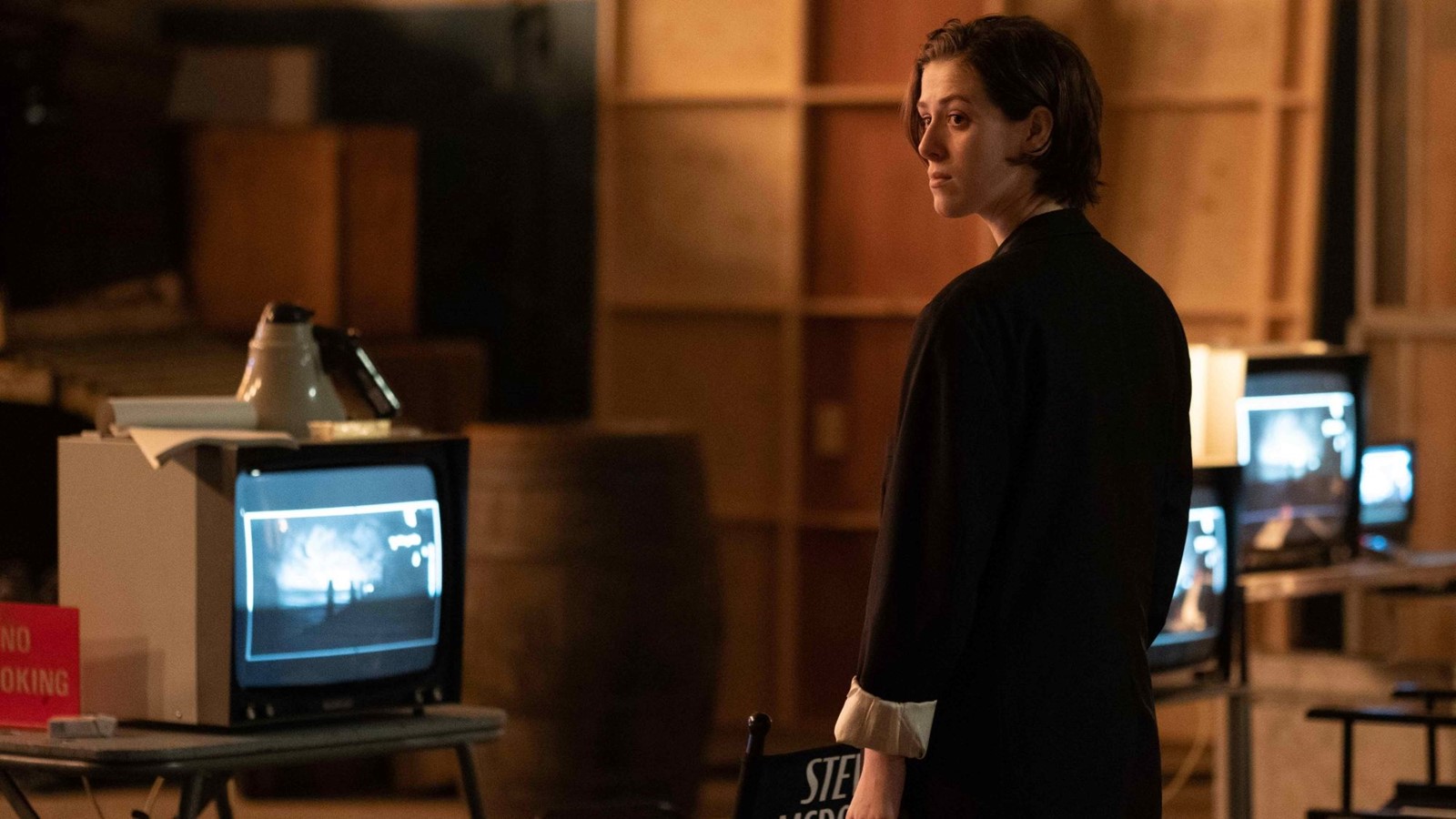
On the surface, Hogg’s Miu Miu film might seem like a departure from her fiercely autobiographical films, which capture tense dynamics between characters in upper-middle-class Britain. This is her first non-English language film, for example, and centres on a handbag, not a person (the inspiration is The Prop, an upcoming book by Elena Gorfinkel and the director’s friend John David Rhodes, and another 19th-century book called Autobiography of a Pocket-Handkerchief by James Fenimore Cooper). But Italy is a country that holds deep significance for the director; it’s the place where she first developed a love of photography, a career she initially wanted to pursue before becoming a director. “Italy is synonymous with my own creativity and my own development,” says Hogg, recalling how her family nicknamed her ‘Joanna Fellini’ after the great Italian director while she was just a teenager. Her first feature film, Unrelated (2007), is also set on a family holiday in Tuscany, a location she revisits here.
It’s also significant that, despite the film being about a handbag, the word ‘autobiography’ still makes it into the title. “It was really important to me that that word was in there because I was thinking about myself and my thoughts and ideas about life,” Hogg explains. “I was actually pouring a lot of thoughts in there. If the handbag was a person, I might not have felt so free to express myself within this story.” Hogg also worked as the director of photography on the film for the first time – shooting on an iPhone – connecting the dots between her love of photography and Italy.
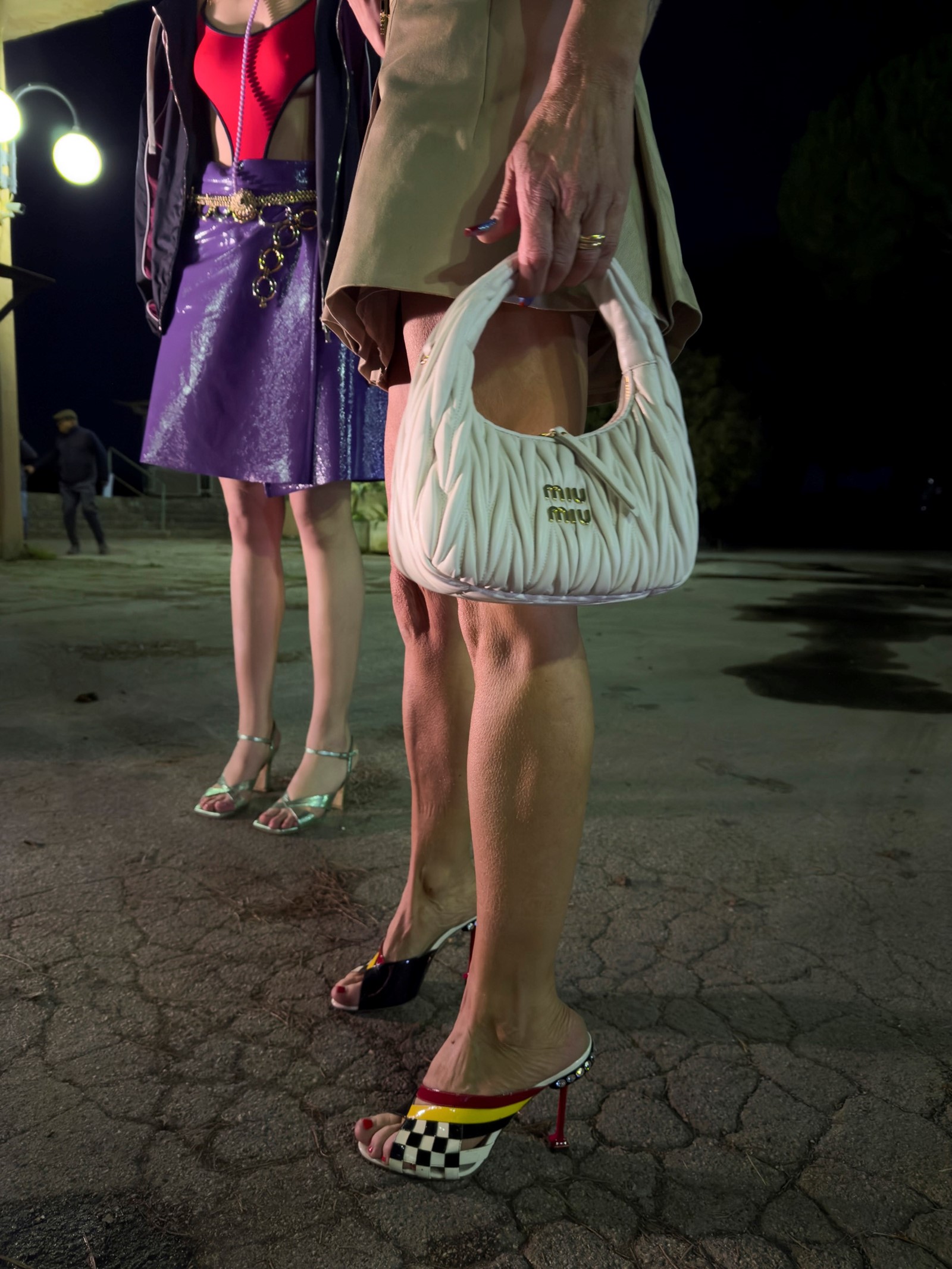
Sifting through Hogg’s films looking for parallel narrative threads can feel like a treasure hunt, so intricate are the meta layers of recurring themes and details which have captivated her for decades. Autobiografia di una Borsetta, for example, sees a woman gives money to her boyfriend, who does not have a job – a scene that Hogg says reminded her of a scene when Julie gives money to Anthony (Tom Burke), a struggling heroin addict, in The Souvenir (a lover stealing from another happens in both films, too). “There are these unconscious things that land in there,” Hogg says. “It all connects.”
Nonetheless, does Autobiografia di una Borsetta signal a future move away from Hogg’s more directly autobiographical filmmaking? “It’s funny because I’ve talked about moving away from myself, which I don’t actually think is possible,” she laughs. “I suppose I mean moving into territory that I might not usually be associated with, or looking at other lives. But of course, like with the handbag, I’ll land straight in there anyway. It’s unavoidable. I can’t do anything at arm’s length, and I don’t want to.”
Autobiografia di una Borsetta by Joanna Hogg is part of Miu Miu Women’s Tales and is available to stream now.
in HTML format, including tags, to make it appealing and easy to read for Japanese-speaking readers aged 20 to 40 interested in fashion. Organize the content with appropriate headings and subheadings (h1, h2, h3, h4, h5, h6), translating all text, including headings, into Japanese. Retain any existing
tags from
Lead ImageAutobiografia di una Borsetta Photography by Brigitte Lacombe
Joanna Hogg’s latest film centres on a handbag. Autobiografia di una Borsetta – Italian for ‘Autobiography of a Handbag’ – opens with a beaten-up Miu Miu Wander bag perched on a rock in a stormy Tuscan valley, recounting its life story rather wearily. “With the shaky memory I now have,” it says, “I find myself looking back on the life I led and witnessed.” Shot almost entirely from the bag’s POV, the film sees the bag ‘birthed’ at a Prada factory and later unwrapped by a teenage girl on her birthday, who is to be the first of its many owers. After it is stolen by the girl’s boyfriend, the bag’s fate takes a turn for the worse; after being hijacked by a gang of women, it witnesses a murder (speaking from the police station, it gravely professes its guilt at having been an accessory to a crime – it carried the gun). By the end of the film, after a brief moment of reprieve, the bag is abandoned and left to rot in a dreary field, all alone.
Despite its subject matter, Autobiografia di una Borsetta is about much more than just a handbag. In its 23-minute run time, Hogg manages to articulate subversive ideas about consumerism, consciousness and selfhood that linger long after the credits have rolled. The film is part of Miu Miu Women’s Tales, an arts initiative launched by Miuccia Prada in 2011, where the brand commissions women directors to create short films (previous directors have included Miranda July, Agnès Varda, Lynne Ramsay, and Ava DuVernay). Although the series claims to “investigate vanity and femininity in the 21st century”, there is no set creative brief, except that the directors must use clothing from Miu Miu’s most recent collection. These short films are also emphatically not adverts for Miu Miu, although they are a genius bit of Trojan horse marketing for the brand – what better way to add cultural value and depth to their products than to associate with the most acclaimed women film directors of the 21st century?

From a dimly lit hotel bar in Mayfair, wearing her signature tortoiseshell aviator glasses and a Loro Piana scarf, Hogg is speaking about her own relationship to the brand. “Before Miu Miu existed, I was enjoying what Prada was doing,” says Hogg, who bought her first nylon bag in the 1980s, and, like Miuccia Prada, adheres to the idea of wearing a personal ‘uniform’. “Then I became really interested in what Mrs Prada was doing in the art world,” she says, in reference to Fondazione Prada, an acclaimed, Prada-backed contemporary art gallery with locations in Milan and Venice.
This is not Hogg’s first foray into fashion; her 1986 graduate film, Caprice, was a dark, surreal feature about what happens when one woman (a young Tilda Swinton) falls into the pages of her favourite fashion magazine. Clothes also play a key role in Hogg’s deeply personal diptych of films, The Souvenir (2019) and The Souvenir Part II (2021), which recreated the director’s own coming of age as a film student in 1980s London; the film’s main character Julie (played by Honor Swinton Byrne) wore many of Hogg’s own clothes – or recreations of them – by brands including Yohji Yamamoto, Vivienne Westwood and Issey Miyake. Last year, Hogg also wrote the foreword to How Directors Dress, a book published by the independent American film studio A24 (who distribute her films). “How you dress is at the heart of not just who you are at work, but who you are in life,” she wrote. “Yet I’m still searching for what I want to wear to work. And that means I’m still searching for who I am.”

“At the time that I made Caprice, I was absolutely passionate about fashion, but I also saw a darker side to it,” says Hogg today. “Particularly as a woman, there’s this other side, which is about a lack of confidence or concern about how I might appear, but a deep love of clothes too. With Caprice, I was wanting to express all these different ideas. In a way, those ideas are still alive in me.” Summing up those existential, flummoxing feelings about fashion is the handbag in Hogg’s Miu Miu film, in one unforgettable line: “As I grew up in this house, I realised I was of great value, but sensed at the same time I was worth nothing at all.”
“Clothes are obviously incredibly important, with The Souvenirs in particular,” Hogg continues. “Those films were all about remembering and bringing to life some of those memories again, and the way of doing that was through what the characters wear. It’s much more than just fabric and shape – it’s all about memory and particular points in my life. It’s very hard to separate the clothes from the feelings and the experiences.”
“It’s much more than just fabric and shape – it’s all about memory and particular points in my life. It’s very hard to separate the clothes from the feelings and the experiences” – Joanna Hogg

On the surface, Hogg’s Miu Miu film might seem like a departure from her fiercely autobiographical films, which capture tense dynamics between characters in upper-middle-class Britain. This is her first non-English language film, for example, and centres on a handbag, not a person (the inspiration is The Prop, an upcoming book by Elena Gorfinkel and the director’s friend John David Rhodes, and another 19th-century book called Autobiography of a Pocket-Handkerchief by James Fenimore Cooper). But Italy is a country that holds deep significance for the director; it’s the place where she first developed a love of photography, a career she initially wanted to pursue before becoming a director. “Italy is synonymous with my own creativity and my own development,” says Hogg, recalling how her family nicknamed her ‘Joanna Fellini’ after the great Italian director while she was just a teenager. Her first feature film, Unrelated (2007), is also set on a family holiday in Tuscany, a location she revisits here.
It’s also significant that, despite the film being about a handbag, the word ‘autobiography’ still makes it into the title. “It was really important to me that that word was in there because I was thinking about myself and my thoughts and ideas about life,” Hogg explains. “I was actually pouring a lot of thoughts in there. If the handbag was a person, I might not have felt so free to express myself within this story.” Hogg also worked as the director of photography on the film for the first time – shooting on an iPhone – connecting the dots between her love of photography and Italy.

Sifting through Hogg’s films looking for parallel narrative threads can feel like a treasure hunt, so intricate are the meta layers of recurring themes and details which have captivated her for decades. Autobiografia di una Borsetta, for example, sees a woman gives money to her boyfriend, who does not have a job – a scene that Hogg says reminded her of a scene when Julie gives money to Anthony (Tom Burke), a struggling heroin addict, in The Souvenir (a lover stealing from another happens in both films, too). “There are these unconscious things that land in there,” Hogg says. “It all connects.”
Nonetheless, does Autobiografia di una Borsetta signal a future move away from Hogg’s more directly autobiographical filmmaking? “It’s funny because I’ve talked about moving away from myself, which I don’t actually think is possible,” she laughs. “I suppose I mean moving into territory that I might not usually be associated with, or looking at other lives. But of course, like with the handbag, I’ll land straight in there anyway. It’s unavoidable. I can’t do anything at arm’s length, and I don’t want to.”
Autobiografia di una Borsetta by Joanna Hogg is part of Miu Miu Women’s Tales and is available to stream now.
and integrate them seamlessly into the new content without adding new tags. Ensure the new content is fashion-related, written entirely in Japanese, and approximately 1500 words. Conclude with a “結論” section and a well-formatted “よくある質問” section. Avoid including an introduction or a note explaining the process.

